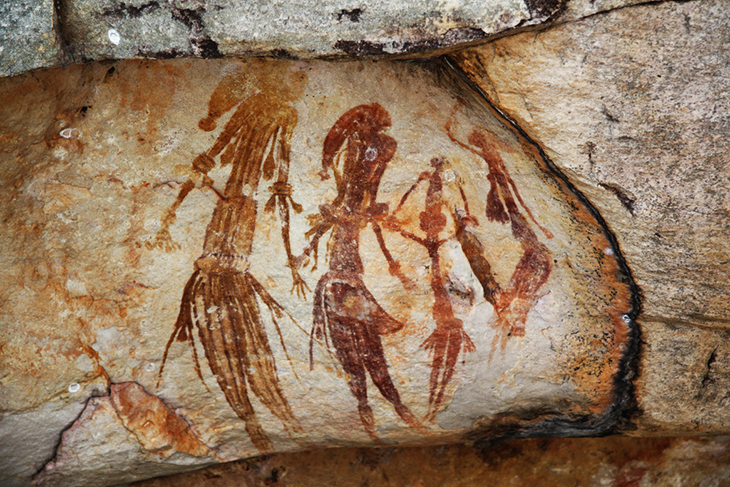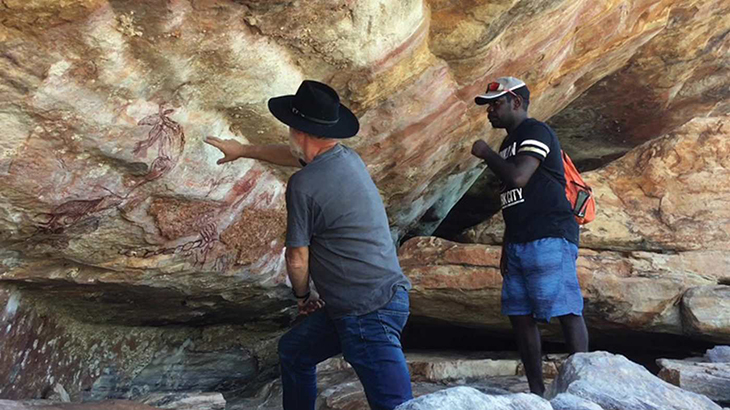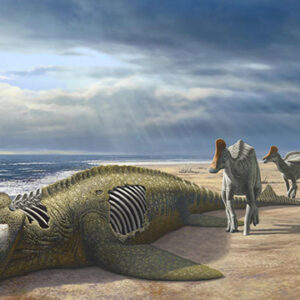 Australia is renowned for its expansive wilderness, but it is not typically recognized for its rock art, despite being home to one of the world’s largest concentrations of such art. However, in West Arnhem Land found on the Queensland Peninsula, a remarkable collection of painted rock art tells the story of humanity’s connection to the Earth, its evolution, challenges, and abundance. What makes this collection even more significant is a newly discovered rock art style that spans 4,000 years of history, illustrating how Aboriginal Australians adapted to the transformation of Arnhem Land into its current lush riverine environment.
Australia is renowned for its expansive wilderness, but it is not typically recognized for its rock art, despite being home to one of the world’s largest concentrations of such art. However, in West Arnhem Land found on the Queensland Peninsula, a remarkable collection of painted rock art tells the story of humanity’s connection to the Earth, its evolution, challenges, and abundance. What makes this collection even more significant is a newly discovered rock art style that spans 4,000 years of history, illustrating how Aboriginal Australians adapted to the transformation of Arnhem Land into its current lush riverine environment.
The entirety of the painted rock art in West Arnhem Land covers a time span of 30,000 years, ranging from the recent past to the last ice age. However, there appeared to be a noticeable absence of images depicting the period between 8,000 BCE and 4,000 BCE. Now, through a collaboration between the Bininj, Mawng, and Amurdak Aboriginal people, alongside archaeologists led by Paul Tacon from Griffith University, these hidden artworks from the missing period have finally been discovered. They provide a glimpse into a changing landscape, where rising sea levels caused the coastlines to recede at a staggering rate of 150 feet per year. Mangrove forests took over the near-shore areas, and increased rainfall nourished the already swollen rivers.
The new rock art style discovered during this endeavor has been named the Maliwawa Style, using the language of the local Mawng People. After eight years of meticulous field surveying and research, the team has documented 572 Maliwawa paintings and is eager to share the captivating story they tell with the rest of the world.
“It was really exciting to find previously undocumented shelters with lots of Maliwawa figures on walls and ceilings, sometimes in scenes,” Tacon said when he spoke to Archaeology Magazine. He also delved deeper about where one can read their feature piece on this interesting find. “When we saw these paintings for the first time, there was a rush of adrenaline, much excitement, cheering, and lots of shouts to each other.”
Around 16,000 years ago, the art of that time primarily consisted of animal depictions. However, approximately 5,000 years later, there was a noticeable shift in style towards portraying humans engaging with animals and the surrounding environment using tools. Following this period, there was a gap of about 4,000 years, which was recently filled by the emergence of the Maliwawa Style. Around 4,000 years ago, Aboriginal artists began incorporating distinctive floral motifs into their works, and approximately 2,000 years later, they started practicing anatomical drawings.
The Maliwawa Style is characterized by figures that depict people in ethereal, floating poses. These artworks often involve metamorphoses, where humans take on the forms of animals, such as a kangaroo head. Notably, the interaction between humans and animals in this style is more intimate than in any other artistic tradition.
In addition to the human-animal connection, the Maliwawa Style also incorporates representations of the changing climate. For instance, it features the first-ever depiction of a dugong in any known painting from that time. Many snakes and reptiles are also depicted, possibly reflecting the frequent flooding of their burrows due to environmental shifts.

In contrast to the other rock art styles found in Arnhem Land, which depict the world from a human perspective, Tacon and his Aboriginal collaborators have discovered that animals often take on the role of storytellers in Maliwawa art. Their theory suggests that this choice reflects the ancient artists’ intention to highlight the profound impact of the dampening of their land on all forms of life.
“Populations were becoming more regionally distinct, and this can be seen in the rock art across West Arnhem Land,” Tacon told Matt Stirn. Archaeology Magazine features his take. “The emergence of a few regionally distinct styles of rock art in northern Australia, including the Maliwawa Style, reflects this.”
Tacon gained valuable insights by collaborating with the Aborigines, adopting a “two-toolbox” approach. This approach highlighted the profound significance of the Maliwawa depictions, which vividly portray the “Dreaming” — the Bininj creation story that recounts the formation of the world and the transmission of spiritual knowledge through art.
“Some Maliwawa Style scenes seem to depict important Dreaming creation stories that are still important today,” Tacon said, “and aspects of the style, such as the back-to-back figures, are still painted in the context of important spirit beings. So the Maliwawa Style figures highlight long-term connections not only to the land, but also to the origin of key creation stories in a time of great change.”
In modern history, the study of rock art has witnessed remarkable progress during the 21st century. Notably, significant discoveries such as the renowned “Sistine Chapel of the Ancients“ and the Pecos River Style have shed new light on the past, leading to the recognition of the latter as the “oldest book in North America.” These impressive rock art creations demonstrate a level of community organization, profound knowledge, and theology that was previously believed to be absent within hunter-gatherer societies.
What are your thoughts? Please comment below and share this news!
True Activist / Report a typo


